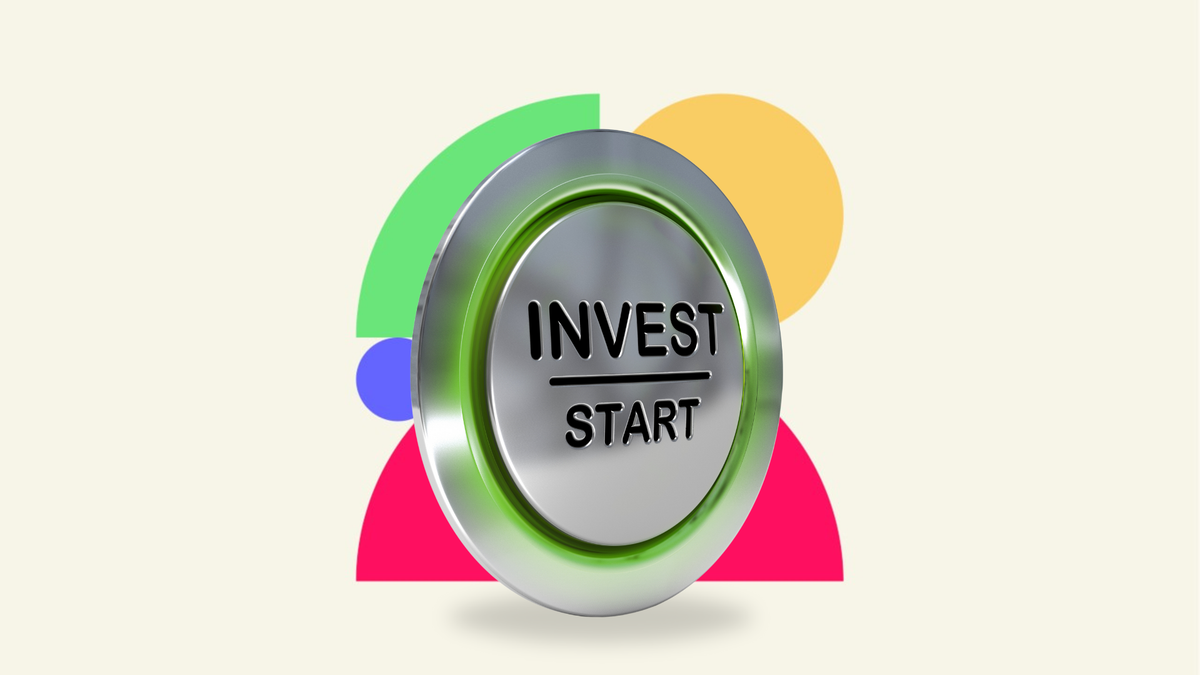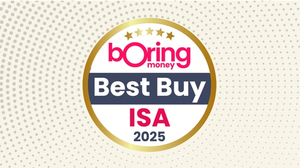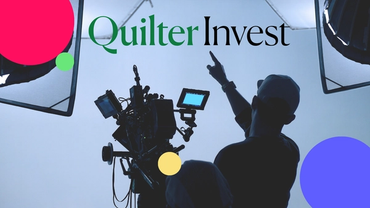3 reasons to stop stalling and just start investing
By Boring Money
20 Jan, 2025
If you’ve never invested before, it can feel daunting putting your money in the stock market. After all, no one can predict the future with 100% certainty. This can (understandably) put you off! But leaving your money to languish in a cash account for years could see your savings deplete in value too. So how do you overcome your paralysis and start putting your finances to good use?

Research from Boring Money found that 27% of savers thinking about investing “don’t know where to start”.[1] Sound familiar? Investing can feel like a scary step into the unknown, like a black art reserved for people who can tell the future or with PhDs in Finance.
But it doesn’t have to be. In fact, there are some core principles which – if you stick to them – can make it easy to invest. In this article, we’re going to run through three reasons you should take the leap and how to get started.
1. You can use ISAs to invest tax-efficiently
Did you know that you may need to pay tax on the money you earn through investing? Two of the main taxes which apply to investing are:
Capital Gains Tax (CGT) - which is charged when the gains (or “returns”) you make on your investments exceed a certain amount. For the 2024-25 tax year, the threshold at which you start paying CGT is £3,000. CGT starts at 18% for basic rate taxpayers and rises to 24% for higher and additional rate taxpayers.
Tax On Dividends – which is charged when the dividends (cash payments) you receive from qualifying investments exceed a certain amount. For the 2024-25 tax year, the dividend allowance is just £500, meaning Dividend Tax will apply to all dividend payments above this threshold. This starts at 8.75% for basic rate taxpayers and rises to as high as 39.35% for additional rate taxpayers.
Sounds like a headache, right? Both in terms of calculating how much tax you’re being charged and the fact that it eats away at the money you’re earning.
The good news is that there’s a way to invest without worrying about UK tax – meet the humble ISA (Individual Savings Account). ISAs allow you to invest up to £20,000 each year without paying UK tax on any gains or dividends you receive from your investments. This means you don’t need to faff around with complex self-assessment tax returns, because you get to keep your money in your pocket.
So if you’re thinking about investing for the first time, opening a Stocks & Shares ISA is a bit of a no brainer. But how do you know which one to get? There’s a lot to think about, from fees and charges to what investments you can actually buy. Some you can start with just £1, others give you access to thousands of investments around the world!
You can browse and compare providers with our ISA comparison table to see who we rate, read our full reviews and hear what real customers think.
2. Remember the power of compound interest
Compound interest is the eighth wonder of the world. He who understands it, earns it. He who doesn’t, pays it.
Those are the wise words of Albert Einstein. "Compounding” is a powerful strategy which can help you to squeeze more money out of your investments. Let’s walk through an example of compounding so you can see what we mean.
Year | With compounding | Without compounding |
1 | £5,250 | £5,250 |
2 | £5,512.50 | £5,500 |
3 | £5,788.13 | £5,750 |
4 | £6,077.53 | £6,000 |
5 | £6,381.41 | £6,250 |
10 | £8,144.47 | £7,500 |
15 | £10,394.64 | £8,750 |
So you can see how compounding can help you make your money go further and amplify your investment returns. But how can you use it when you invest? Here are two ways you can incorporate compounding into your investing strategy.
a) Take a long-term approach
Investing for the long-term is one way you can ensure you allow your investments enough time to accumulate. There is no hard-and-fast rule about what constitutes long-term investing, but generally speaking, this is going to be at least 5 years. Most likely 10 years+. The longer you leave your money invested, the more time you’re giving it to snowball and accumulate growth.
b) Use a regular investment plan
An easy way to automate the compounding process is to set up a regular investment plan. Many investment providers allow you to set up a monthly direct debit or bank transfer into your account – rather than sporadic lump sums – from as little as £25.
For example, Lloyds customers can set up a Regular Investment Plan for free starting with £20 instalments. It’s all done for you automatically, so you won’t need to remind yourself to do it manually every month. In some cases, providers will also give you a discount on dealing fees if you’re on a regular investment plan too. Win-win.
So if you’re planning to start investing, why not open an ISA and set up a regular investment plan to get going?
3. Invest in ETFs for an all-in-one solution
Finally, once you’ve opened an investment account, it can be confusing to know what you’re actually supposed to invest in. Many providers have thousands of different options – from shares to funds to investment trusts – and it can feel like information overload trying to work out which is best for you. This is where ETFs can be a great one-stop-shop.
An Exchange Traded Fund or ETF is a basket of shares, packaged up into a single fund, which you can buy or sell on the stock market. Most ETFs are “passive” - meaning they replicate existing stock market indices, such as the FTSE 100 or the S&P 500. But they can also be actively managed by expert fund managers who continually monitor and adjust the underlying holdings.
ETFs can also be a straightforward way to back a trend, such as clean energy or technology, without having to spend hours researching and selecting dozens of individual shares to invest in by yourself.
Getting access to multiple assets through one simple ETF is great because you don’t need to buy hundreds of different stocks to get exposure to an entire stock market. With just a handful of ETFs, you can create a low-cost, diverse portfolio which can be held in an ISA account for maximum tax-efficiency.
ETFs are a great option for people who want to build and manage their own portfolio. They're simple to understand and offer investors a low-cost, diversified set of holdings.
---
[1] Boring Money, March 2024






